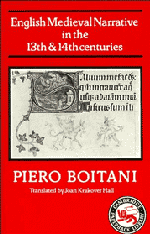4 - Dream and Vision
Published online by Cambridge University Press: 04 April 2011
Summary
One literary genre, now extinct, was cultivated with particular interest in the Middle Ages. This was the genre in which a dream or vision constituted the framework, in form and substance, of the work of art. It was inherited from the classics and from Scripture: the Somnium Scipionis in Cicero's De Re Publica and the commentary on it by Macrobius, the visions of Ezekiel, Paul and John, and Alain de Lille's De Planctu Naturae are examples of a tradition that did not die out until the end of the Middle Ages. The vision and the dream are artifices whereby the artistic ego can speak to the reader through two voices that may be quite different – that of the poet and that of the dreamer. These modes generally indicate a penetration of the human spirit into a realm beyond the confines of ordinary experience, into a dimension where one discovers absolute truths and ontological realities, which appear only in veiled form in the sensible universe. In the dream there is always an underlying seriousness, which is not entirely cancelled even by a relatively light-weight subject. The vision always carries an important message from the author to his audience; nearly always there is a prophecy to be extracted and decoded. The genre is so elastic that, in the course of its development in the Middle Ages, it was not limited merely to themes of philosophical discussion, the experience of the other world and the mystic or apocalyptic vision.
- Type
- Chapter
- Information
- Publisher: Cambridge University PressPrint publication year: 1982



